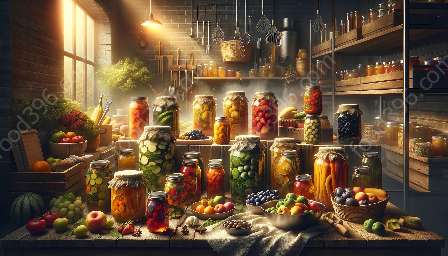When it comes to food preservation and processing, canning is a time-tested method that has been used for generations. In this guide, we will explore the art of canning, including its techniques and methods, to help you understand and utilize this important skill in an attractive and practical way.
Understanding Canning
Canning is the process of preserving food by sealing it in airtight containers to prevent spoilage. This method extends the shelf life of food by destroying any microorganisms that can cause decay and effectively stopping the enzymes that can cause food to spoil. There are two primary methods of canning: pressure canning and water bath canning.
Pressure Canning
Pressure canning is used for low-acid foods such as vegetables, meats, and some fruits. The high temperatures achieved during pressure canning are necessary to destroy the spores of the bacteria Clostridium botulinum, which can cause botulism. This method involves using a special pressure canner that allows the internal temperature to reach 240°F, effectively killing any harmful bacteria and ensuring safe preservation of low-acid foods.
Water Bath Canning
Water bath canning is suitable for high-acid foods such as most fruits, jams, jellies, and pickles. It involves submerging sealed jars in a large pot of boiling water for a specified period, which helps to destroy spoilage microorganisms.
Methods of Canning
There are several methods for canning that can be utilized based on the type of food being preserved. These methods include:
- Hot Pack: In this method, food is heated in water, juice, or syrup before being placed in jars. This reduces air in the tissues of the food and helps prevent floating in the jar.
- Raw Pack: Raw foods are packed into jars and hot liquid is poured over them prior to processing. This method is commonly used for fruits and tomatoes.
- Open Kettle: This method involves heating food in an open kettle, then pouring it directly into jars and sealing. It's suitable for high-acid foods but is not recommended for low-acid foods due to the risk of spoilage.
Attractive and Realistic Canning
When it comes to canning, it's important to approach the process with creativity and practicality. Using fresh, high-quality ingredients and investing in the right equipment can make the canning process attractive and satisfying. Additionally, being mindful of safety guidelines, such as maintaining a clean workspace and following recommended processing times, is crucial for realistic and successful canning.
Creative Labeling and Presentation
After jars are sealed and the canning process is complete, an appealing and attractive touch can be added with creative labeling and presentation. Consider designing custom labels for your canned goods, including the date of canning and any additional information such as ingredients and serving suggestions. Utilizing unique and attractive packaging can make your preserved foods visually appealing and giftable.
Final Thoughts
Canning is a valuable skill that allows you to preserve the flavors of the season and enjoy your favorite foods year-round. By understanding canning techniques and methods and approaching the process with creativity and practicality, you can experience the art of canning in an attractive and realistic way. Whether you're preserving the bounty of your garden or creating homemade gifts, the art of canning is a rewarding and satisfying endeavor.

